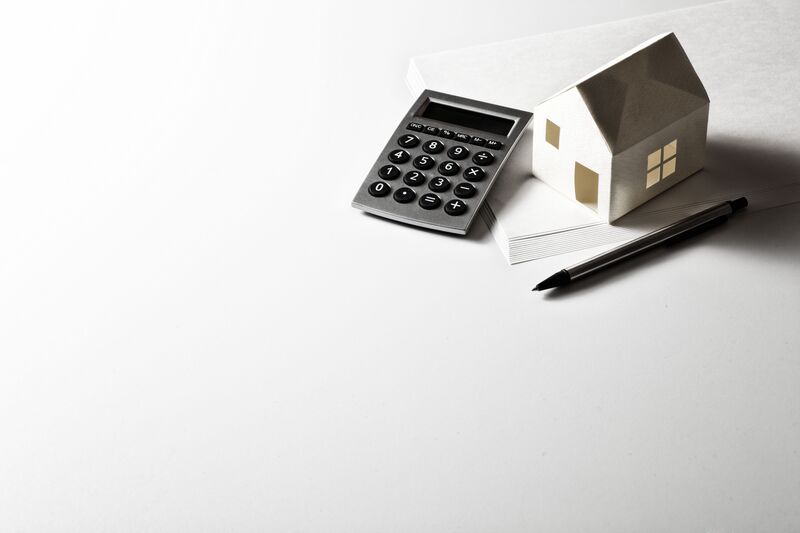Complete Guide to Decommissioning and Storing Your Freezer Safely
Keeping your home or facility running efficiently sometimes means taking a major appliance, like a freezer, out of service for a while. Whether you're replacing an old unit, planning to store it during renovations, or seeking extra safety, decommissioning and storing your freezer safely is crucial. Done right, you'll protect your investment, your family, and the environment. In this comprehensive guide, we'll walk you through everything you need to know to responsibly shut down, clean, and store your freezer to preserve its condition for future use.
Why Is Proper Freezer Decommissioning and Storage Important?
Freezers are durable, but they're not invincible. Improper decommissioning can lead to:
- Mold and Odor: Leftover food particles and moisture become breeding grounds for bacteria and mold.
- Corrosion and Damage: Components can rust or degrade if not correctly prepared for storage.
- Electrical Hazards: Forgotten unplugged wires or damaged cords may cause accidents.
- Environmental Harm: Refrigerants and other chemicals must be handled with care to avoid leaks.
- Pest Infestations: Leftover debris and open access invite rodents and insects.
Strong attention to detail during the process ensures safe long-term freezer storage and helps protect both your household and the environment.

Planning the Decommissioning Process
Before you unplug your appliance, consider the following checklist for preparing to decommission a freezer:
- Pick the Right Time: Make sure your freezer is empty of all perishable items. Plan your grocery shopping in advance to minimize waste.
- Find an Appropriate Storage Location: Freezers fare best in dry, well-ventilated, and temperature-controlled environments.
- Gather Supplies: You'll need cleaning solutions, cloths, a screwdriver, baking soda or activated charcoal, and moving equipment.
- Review the Manufacturer's Manual: Look for specific guidance unique to your freezer model; improper handling can void warranties.
Step-By-Step: How to Decommission Your Freezer
1. Safely Remove All Contents
Start by sorting through the contents of your freezer. Dispose of expired items, and transfer valuable perishables to another freezer or make arrangements with neighbors or food banks whenever possible. Ensure no food residue or packaging is left behind that could rot or attract pests.
2. Unplug and Disconnect Your Appliance
Safety first: Always disconnect your freezer from the power source before proceeding. For standalone units, simply unplug the cord. For integrated or hardwired freezers, consider consulting a professional to ensure safe disconnection.
- Remove plug from the socket--never yank the power cord.
- Inspect the cord for wear or damage that should be addressed before storage.
- If it's a chest or upright freezer with a water or ice dispenser, shut off and disconnect the water line as well.
3. Defrost the Freezer Thoroughly
Never skip this step! Even frost-free models accumulate some ice over time. To prevent moisture buildup and mold:
- Open the door and let the ice melt naturally. Place towels or shallow pans inside the compartment to absorb water.
- Speed up the process if needed by placing bowls of warm water inside or using a fan to circulate air.
- Never use sharp tools to chip away at the frost--this can damage the lining or cooling elements.
4. Deep Clean and Deodorize
Meticulous cleaning is key for storing your freezer safely. Here's how to ensure a spotless environment that prevents odors, mold, and corrosion:
- Remove all shelves, drawers, and detachable parts. Wash these in warm, soapy water, rinse, and dry thoroughly.
- Wipe down all internal and external surfaces with a gentle cleaning solution. You can use a mixture of baking soda and water (2 tablespoons of baking soda per liter of water) for an effective and safe clean.
- Pay special attention to gaskets and seals, as residues in these areas can degrade the rubber or attract insects.
- For persistent odors, use activated charcoal, a bowl of dry coffee grounds, or a specialized deodorizer. Place them inside the freezer and seal the door for several hours.
Finish by drying all surfaces with a clean, lint-free towel to prevent moisture.
5. Check Internal and External Components
- Inspect the power cord for fraying or cracks.
- Check wheels, hinges, handles, and seals for wear or needed repairs.
- Ensure all screws, trays, and removable parts are accounted for and securely attached or stored.
Address any issues now to avoid bigger headaches when you reinstall or sell the unit in the future.
6. Air Out the Freezer
Leave the freezer door wide open for at least 24 hours in a dry, ventilated space to eradicate all residual moisture. This step is vital for safe freezer storage and preventing future mold or mildew.
Best Practices for Freezer Storage
Choose the Perfect Storage Environment
Where and how you store your decommissioned freezer makes all the difference. Consider these tips for optimal freezer storage:
- Store in a dry, cool area: Moist basements or unheated garages may invite rust, especially in humid climates.
- Protect from extreme temperatures. Ideally, storage spaces should remain between 10?C-32?C (50?F-90?F).
- Keep off dirt floors or direct concrete. Use wooden pallets, rubber mats, or cardboard beneath the appliance to increase airflow and prevent condensation.
- Avoid direct sunlight or sources of heat, which can cause plastics to warp and gaskets to dry out.
Prevent Pests and Moisture
- Ensure all doors are propped open with a bungee cord or a purpose-built wedge. This prevents mildew and allows airflow.
- Slip a few silica gel packs or moisture absorbers inside the interior to keep humidity at bay.
- Place a box of baking soda or charcoal inside the freezer to continue neutralizing odors during storage.
Protect the Exterior
- Drape a breathable cover--like an old bed sheet--over the top. Avoid plastic, which can trap condensation.
- Avoid stacking heavy objects on top of the freezer, as this may dent the casing or damage the door seals.
- For long-term storage, check in periodically to inspect for pests, moisture, or dust buildup.
Environmental and Safety Considerations
Handling Refrigerants and Hazardous Materials
Some older freezers and certain commercial models contain refrigerants that are harmful to the environment. If you plan to dismantle or dispose of a non-working unit, you legally must have the coolant recovered by a certified professional. Never attempt to cut or remove lines yourself!
For appliances being stored, ensure all lines and tanks are intact and untouched, to prevent leaks or accidental exposure.
Child Safety: Preventing "Freezer Entrapment"
Never store a decommissioned freezer in any area accessible to children unless extreme caution is taken. Propped-open doors can close accidentally, creating an entrapment hazard.
- Permanently remove or disable the latch when storing outdoors or in accessible locations.
- Secure the freezer upright, or ideally, position it lying down with the door taped or locked open.
- Consider posting a warning sign while the unit is in storage.
Recommissioning Your Freezer: Bringing It Back Into Service
- Inspect Before Use: Remove all desiccants, odor absorbers, and any protective coverings. Give the freezer a light wipe-down, checking once more for pests or mold.
- Reconnect Utility Lines: Restore any disconnected ice or water lines and electrical power. Inspect for any signs of wear or damage that may have developed during storage.
- Test the Appliance: Plugin and allow the freezer to run empty for at least 24 hours. Monitor temperatures, check for abnormal noises or leaks, and ensure all systems - lights, fans, controls - are operational.
- Restock and Organize: Once you're confident the appliance is running efficiently, gradually add food back, taking care not to introduce spoiled or wet items.
Alternative Options: Recycling, Donating, or Selling Old Freezers
If, after decommissioning, you no longer need your freezer, consider environmentally-friendly disposal options:
- Recycling: Most municipalities offer bulk waste pickup or appliance recycling days. Ensure refrigerants are properly removed or handled.
- Donation: If functional and safe, donate to charities, shelters, or community centers.
- Resale: List on secondhand marketplaces--just be honest about the unit's age and condition.

Frequently Asked Questions on Freezer Decommissioning & Safe Storage
How long can a freezer be stored without damage?
A carefully cleaned and prepped freezer can be stored safely for several years. The key is maintaining a dry, temperate environment and ensuring doors remain propped open.
Can I lay my freezer down during storage?
As a rule, upright storage is best. If you must lay the freezer on its side for moving or storage, ensure all fluids settle for 24+ hours in their normal positions before reconnecting to power.
Is it necessary to remove all shelf inserts for storage?
Removing detachable shelves, drawers, and baskets prevents warping and makes cleaning easier, but for short-term storage, they can be left inside if completely dry and clean.
Conclusion: Keeping Freezers Safe for the Future
Properly decommissioning and storing your freezer is an investment in both safety and equipment longevity. By following the tips and techniques in this complete guide to freezer decommissioning and safe storage, you'll protect your appliance, your surroundings, and your household from avoidable risks, while ensuring you can return your freezer to service when needed--clean, odor-free, and ready for years of reliable performance.
For more advice on freezer maintenance, responsible disposal, or safe appliance storage, consult your local appliance professionals or environmental services. Your safety--and the planet's--depends on it!



